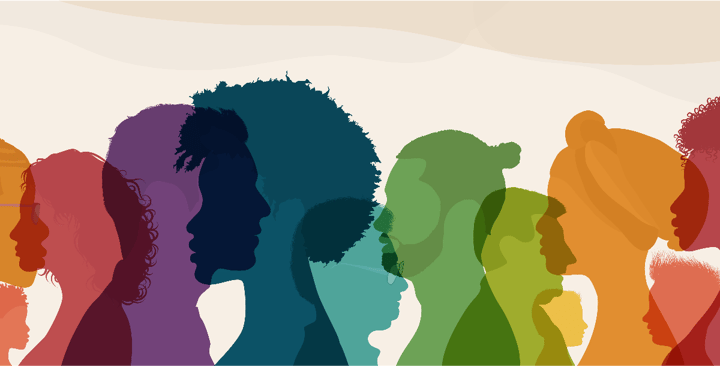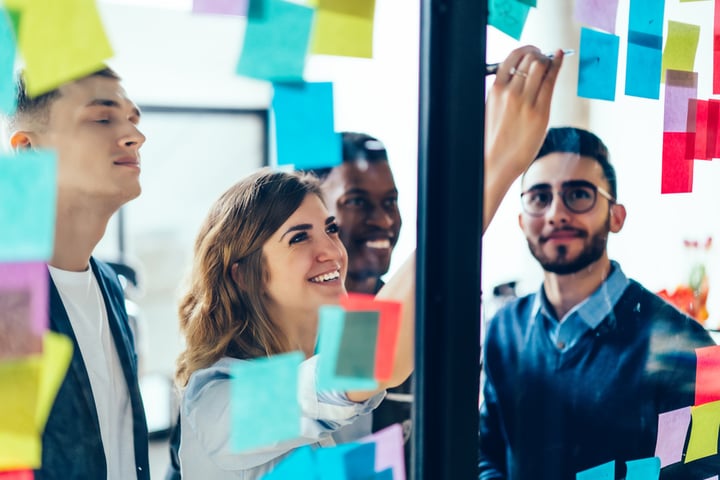Leading Proud, Part 2: How can allies support our community?
Allyship is up there in the top 3 of buzzwords dominating the LGBTQ2+ inclusion landscape right now, and for good reason. To create systemic change, we need critical mass. Statistics Canada estimates that our community comprises about 4% of the population. None of the rights our community has won in recent years, including marriage equality (2005) and protections for gender identity and expression in the Canadian Human Rights Act (2017), would be possible without widespread support. We need people from all walks of life, not just our community, to care about our lives and to work for change.
During Pride Month especially, a lot of well-intentioned people are eager to sign on as allies and show their support. Pride is fun! The draw to participate is strong, and it feels to many like an accessible entry point. So what’s the best way to engage with and support a community you are not a part of? To get allyship right, I recommend thinking about it as the practice of understanding and aligning yourself with the goals of the community.
Allyship is a relationship in which allies build their ties with the community by helping us achieve our goals. And while our goals should be systemic, the ties are personal.
Here are 3 things ANYONE can do to build ties and practice allyship all year round.
- Educate yourself.The emphasis here is on the word yourself. It’s very awkward and often inappropriate to ask your LGBTQ2+ colleagues to explain their identities to you. It’s also a tiresome request, frankly, when a simple google search can yield all the answers. If you need basic knowledge, take the 5 minutes to do the research so that your LGBTQ2+ colleagues don’t have to explain things to you. Community centres like The 519 have a wealth of free resources online that anyone can access and use.
Educating yourself also means that you will be less likely to commit a microaggression out of ignorance. If you want to signal that you are an ally and that it’s safe for us to be out around you, you understand, stop yourself, and stop others from microaggressing. I love the Micropedia of Microaggressions, another free resource that defines and explains many categories of microaggressions, including those the LGBTQ2+ community faces. - Respect our boundaries. Of course it’s ok to ask people questions about themselves so that you can build relationships and get to know people. But use this simple rule of thumb: if you wouldn’t ask a straight person, don’t ask an LGBTQ2+ person. For example: would you ask a straight person who is pregnant, “how did you make your baby?” Probably not. By the same token, you are not entitled to this knowledge about same sex parenting journeys, no matter how curious you may be.
That being said, of course your LGBTQ2+ colleagues are a great resource and listening to their stories is one of the best ways to really understand the community and the kinds of challenges that we face at work today. The trick is to remember that we choose to share our stories with people we trust. So if your colleagues aren’t readily sharing with you, don’t assume it’s because everything is fine and our organization is 100% inclusive. You might need to do some relationship-building before you can expect to hear the full story. - Remember it’s not about you. Most people know that good allies don’t centre themselves, but they struggle with what that means in practice. Think of this in two ways. First, not centering yourself means that you don’t take the spotlight. If you’re part of your organization’s LGBTQ2+ employee resource group and you’re there as an ally, you shouldn’t be the one sitting on the panel or taking the lead in discussions. You should be in a supporting role. Offer to organize logistics or do speaker outreach and then spotlight a community member for the high visibility work.
The second way of thinking about this is that allies should step up to do some of the uncomfortable, hard work so that this is not left to the community ourselves. When someone’s language needs to be corrected, when an awkward educational conversation needs to happen, when a troll comments on a pride post and someone needs to deal with it– allies, you should be on deck! Your willingness to deal with the hard stuff alleviates that pressure from us, and nothing feels more like real allyship in the moment. A lot of allies are hesitant to do this because they want to defer to the community about what the right thing to do is in these difficult moments. If that’s how you feel, head back to step 1 and continue educating yourself.
To learn more about The Humphrey Group’s learning experiences on allyship and inclusion, or to contact us about bringing these learning experiences to your organization, visit us at thehumphreygroup.com.
Related Posts
Leading Proud: 3 Key Facts for Better LGBTQ2+ Allyship at Work
Do you think you're an ally at work? Learn about how education and LGBTQ2+ allyship at work are connected and vital for an inclusive environment for all!
Read MoreLeading Proud, Part 1: What does it mean to lead proud?
What does it mean to lead proud? How can you do it? Check out Margo’s post for a glimpse into the strategies we share in Proud to Lead, our leadership development experienced designed and delivered by the community for the community.
Read MoreDefining DEI: What Are Some Key Terms I Should Know? (Pt 2)
This week, we will build on last week’s learning by tackling some important terms that we hear often in DEI conversations.
Read More

